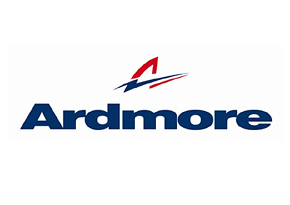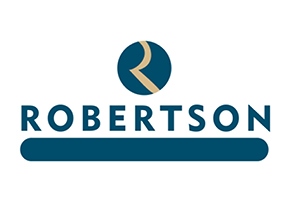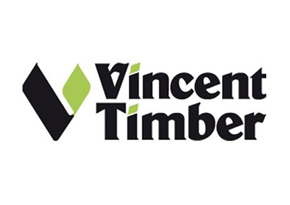Flooring
There are many engineered decorative wood flooring products available on the market, offering both aesthetic beauty with high performance. Detailing is very important to ensure that the product is suitable for the application – and in particular able to cope with changes in temperature and humidity.
Using our FAQs, simple guides and flooring book below, let us help you get the design right first time.
For design consultancy, inspections and training on flooring, call our technical helpline on +44 (0)1494 569601. All commercial services are provided by TRADA’s service provider, Exova BM TRADA.

What moisture content should I specify for timber flooring?
Although BS 8201 provides general guidance on the moisture content that timber flooring will generally settle to in different environments, it is important to note that these values can vary.
When specifying a moisture content for timber flooring, you should give special consideration to the heating/air conditioning regime in the building where the floor is to be installed. For example, a conservatory in a house or a glazed atrium in a commercial building may be subject to significat solar gain.
You will find guidance on specifying and achieving the appropriate moisture content in the TRADA publication Wood flooring: a professional's guide to installation.
Which timbers are suitable for timber flooring?
Many timber species, both softwood and hardwood, are suitable for timber flooring. Key considerations are appearance and performance, especially resistance to wear and movement characteristics.
A list of species suitable for flooring, including their movement classification and density, is given in BS 8201. Note that some of these species are not commercially popular or readily available. However, you should find it relatively easy to source alternative timbers that can be used in their place.
You can find guidance on selecting apropriate timber species in the TRADA Wood information sheet Decorative timber flooring.
How long should a screed be left to dry before laying a timber floor over it?
BS 8201 advises a screed drying time of one day per millimetre for the first 50mm, with a longer period being allowed for thicker screeds. Type of construction, screed mix and weather conditions will also have an impact on drying time.
In all cases, you should monitor at regular intervals the humidity levels in the screed to ensure that it is at an acceptable limit before installing the flooring. Methods for monitoring humidity levels are included in Appendix A of BS 8201.
You will find guidance on assessment and preparation of a sub-floor in the TRADA publication Wood flooring: a professional's guide to installation.
Where should I provide gaps for expansion?
This is an important and often complex consideration, and the correct detailing will depend on the demands of your particular flooring design.
It is critical that you have enough provision for expansion (or shrinkage) across the width of the floor, or there may be an increased risk of the development of defects or failure of the floor in service. You should also allow for peripheral gaps around the perimenter of the floor and at its junction with other abutments, and gaps from the bottom of the skirting and around service pipes.
You will find guidance on the provision of expansion gaps in BS 8201 and in TRADA's Wood Information Sheet Decorative timber flooring, and in the TRADA publication Wood flooring: a professional's guide to installation.
Should I acclimatise my timber flooring before installation?
It is generally accepted that on-site storage prior to installation of pre-finished, factory-dried flooring should be kept to an absolute minimum and that packs of flooring are kept wrapped within their original wrappers until required.
Where on-site storage or acclimatisation of timber flooring is considered necessary, it is vital that the storage conditions are as close as possible to the expected in-service conditions. This will help the timber to achieve its 'equilibrium moisture content' (EMC) and keep the in-service moisture content of the floor to an acceptable minimum.
Follow the flooring manufacturer's recommendations and moisture content guidance in BS 8201 to ensure that you specify appropriate moisture content for the timber.You should have this checked by the isntaller immediately prior to laying.
Wood and its movement properties, and flooring types and their reaction to moisture are discussed in detail in the TRADA publication Wood flooring: a professional's guide to installation.
How should I fix down a solid timber floor?
Fixed flooring is where the flooring components are nailed down to the underlying battens or joists, resulting in a 'captive' floor surface, with each individual flooring component fixed firmly to the sub-floor.
Specification of fixing for solid timber flooring and modern multi-layered, engineered boards will depend mainly on the type and frequency of fixing and the nature of the substrate.
Fixing is carried out using nails, screws, staples or adhesives and guidance for using these methods is given in BS 8201.
However, TRADA recommends that you always seek and follow the flooring manufacturer's guidance and recommendations for fixing and for any proprietary sub-floor systems.
You can find guidance on flooring installation and fixing techniques in the TRADA publication Wood flooring: a professional's guide to installation.
How can I design to prevent floors squeaking in service?
Floors squeaking in service, particularly when subjected to foot traffic, can be caused by a number of factors - and often more than one.
One of the main causes is physical movement of the floor structure due to moisture-related shrinkage of timber components and resulting friction betrween these components. Other factors include excessive notching or drilling, insufficient strutting or the suitability of fixings.
Consult TRADA's Wood information sheet Timber joist and deck floors - avoiding movement for specific guidance intended to minimize problems of movement and noise in timber floors in masonry or timber frame buildings.
Which finish should I specify for my solid wood floor?
Although timber flooring can be left unfinished to wear naturally, sealing keeps your floor clean and minimises damage and wear. However, the process does not end with application of the final seal coat. Maintenance and aftercare considerations similarly influence long term performance and service life.
Your choice of finish will depend upon several factors, such as the desired appearance, slip resistance and wear resistance.
A large number of floor sealing options are available: ranging from oil and wax finishes that require frequent maintenance but are simple to reapply, to polyurethane lacquers that generally provide more resistance to wear, but damage is difficult to repair.
You will find guidance on floor preparation and the selection and application of floor seals in the companion TRADA Technology Reports Sealing Timber Floors: A best practice guide and Seals for timber floors: A specification guide.
Where can I get more help?
TRADA membership
As a member of TRADA you can enjoy free access to our entire online collection of technical guidance on not only decking but all other construction related topics.
You can also use our Technical Helpline (01494 569601) for free at any time during office hours. (Please note that advice is limited to 30 mins per call. Commercial consultancy by BM TRADA can also be provided where written or professional opinion is required on specific products or projects.)
Introductory guidance
You can register for free and download some of the guidance below:
- Yearbook article: Specifying wood flooring
- Magazine article: Research finds adhesive layer improves wood flooring performance
- Choose and use: Wood flooring (members only)
- Wood information sheet: Decorative timber flooring (members only or available in our bookshop).
Comprehensive guidance / books
Wood flooring: a professionals’ guide to installation, (online edition for members only or available in our bookshop).
Training
We run introductory and intermediate training courses on a range of timber topics.
In-house courses can also be provided.
Consultants and commercial services
BM TRADA is able to provide a wide range of commercial services including product testing, certification, CE marking, and product design advice.




























